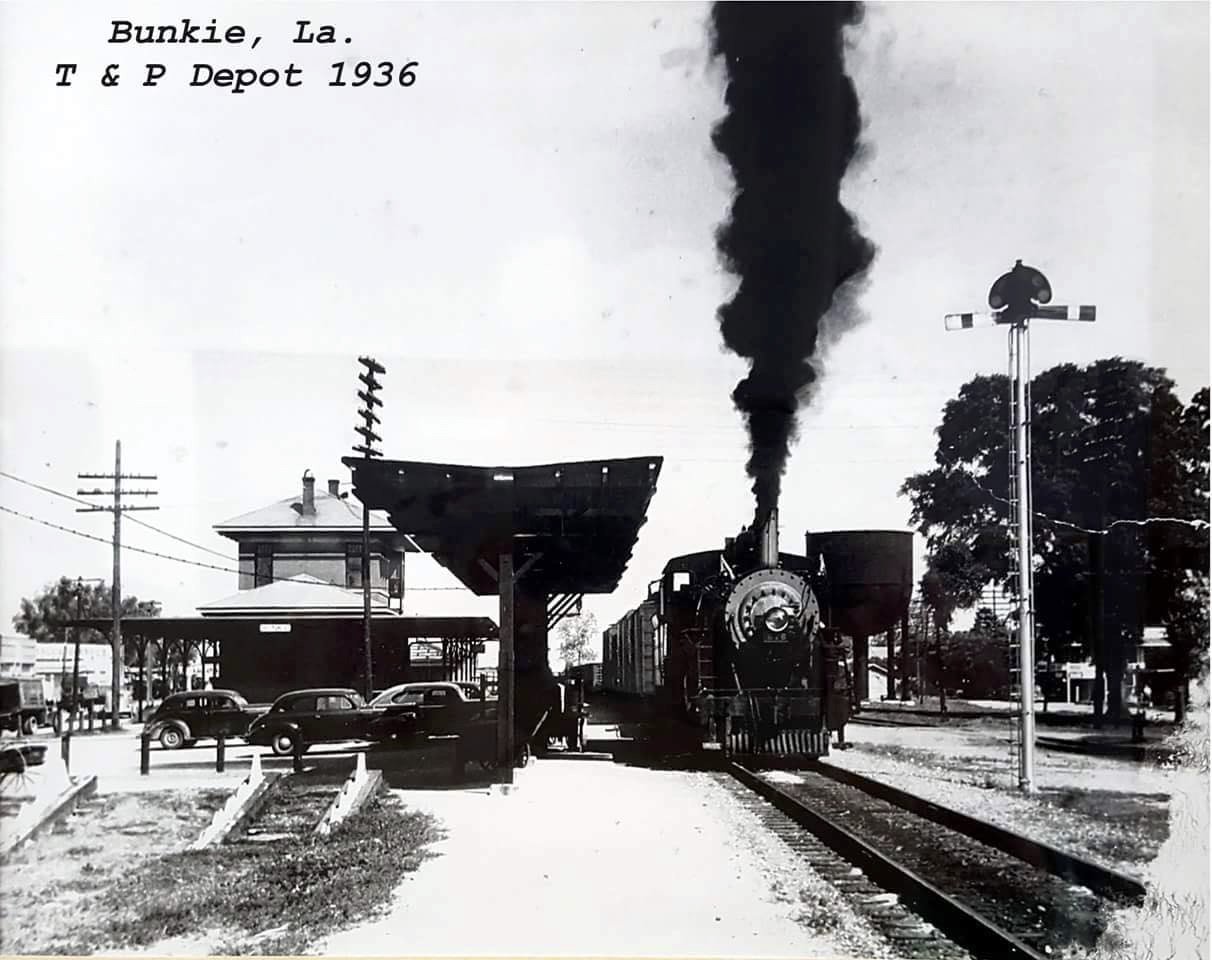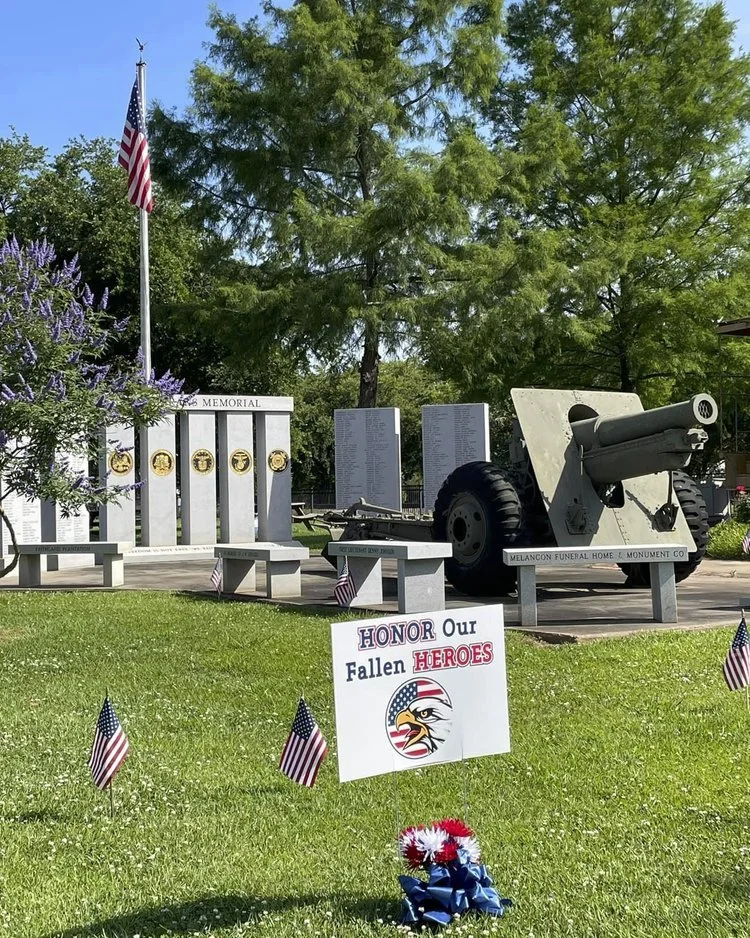
Tourism
Veteran’s Monument
“The true soldier fights not because he hates what is in front of him, but because he loves what is behind him.” ―G.K. Chesterton
The Bunkie Veteran's Memorial was dedicated to the veterans of Bunkie and the surrounding areas in front of a large crowd on July 4, 2001.
The Veteran's Memorial is located next to the historic Bunkie train depot, which is now home to the Bunkie Chamber of Commerce. Names are still being added to the monument on a yearly basis. If you would like to have your Veteran's names added to the monument, please click the link below to obtain the form and return it, along with the $100 fee to the Bunkie Chamber of Commerce office.
Jefferson Highway
Named after U.S. President Thomas Jefferson, completed on February 4, 1926 the “Pine to Palm” route was one of the first intercontinental highways. The Jefferson Highway extends 2,194 miles from Winnipeg, Canada through Bunkie (current Shirley Rd and Hwy 71) ending in New Orleans at St. Charles Ave. & Common St.
There are a few notable sites in Bunkie along the Highway such as
The Bunkie Depot 110 NW Main St
Griffin’s Antiques 228 SW Main St
Merchant & Planters Bank (Cottonport Bank) 122 SW Main St
Bunkie Wood Products 1156 SW Main St
The Bailey Hotel 200 W Magnolia St
Coca-Cola Plant 608 SW Main St
Bowie Knife Location
Gator Grounds
At Gator Grounds we strive to present our customers with a fun, family friendly, and activity filled camping stay. Our park is open to our campers, their campsite visitors, and park members; with our golf course being open to the general public.
Address:
200 Golf Course Road
Bunkie, LA 71322
Phone:
(318) 295-4030
Northup Trail
The 83-mile Northup Trail tells the story of Solomon Northup, a free-born African American farmer and professional violinist from New York. In 1841, he was offered a traveling musician’s job and was convinced to travel to Washington D.C., where slavery was legal. While there, he was kidnapped and sold into slavery. Northup and other slaves were shipped to New Orleans by sea. During the voyage, Northup persuaded an English sailor to send Henry Northup a letter that told of his kidnapping. Henry Northup, a lawyer, was the son of the man who had once held Solomon’s father as a slave and freed him. Henry Northup wanted to help, but needed to know where Solomon was.
In New Orleans, Northup was given the name “Platt” and eventually arrived in Central Louisiana where he remained a slave from 1841-1853.
The Northup Trail follows his journey and visits sites such as the Red River Landing in Alexandria, where Northup and three other slaves disembarked the steamer Rodolf after being sold in New Orleans and the Epps House ( on the LSU-A campus), where he met and confided in a Canadian-born carpenter Samuel Bass. Bass is credited with writing several letters on Northup’s behalf to friends and officials in New York in hopes of finding help. Bass was in great danger by helping Northup send letters telling of his plight in Louisiana. Finally, Bass’s letters reached two storekeepers in New York who knew Northup. They contacted his wife who contacted Henry Northup. This chain of events set the process in motion to free Northup.
In early 1853, attorney Henry Northup arrived in Marksville, enlisted the help of local attorney John P. Waddill. The attorneys and the sheriff went to the Epps Plantation on Bayou Boeuf to find Northup. On January 4, 1853 at the Avoyelles Parish Courthouse in Marksville (another site on the trail), papers were signed and Northup was at last a free man again.
Upon his return to New York, Northup chronicled his life as a slave in his memoirs, Twelve Years a Slave, which was made into a movie of the same name that won the Best Picture Oscar in 2013.
Twenty-two signs mark the stops of the Northup Trail, which starts in Alexandria and then goes to Louisiana State University at Alexandria, Bunkie, Evergreen, before ending in Marksville.




